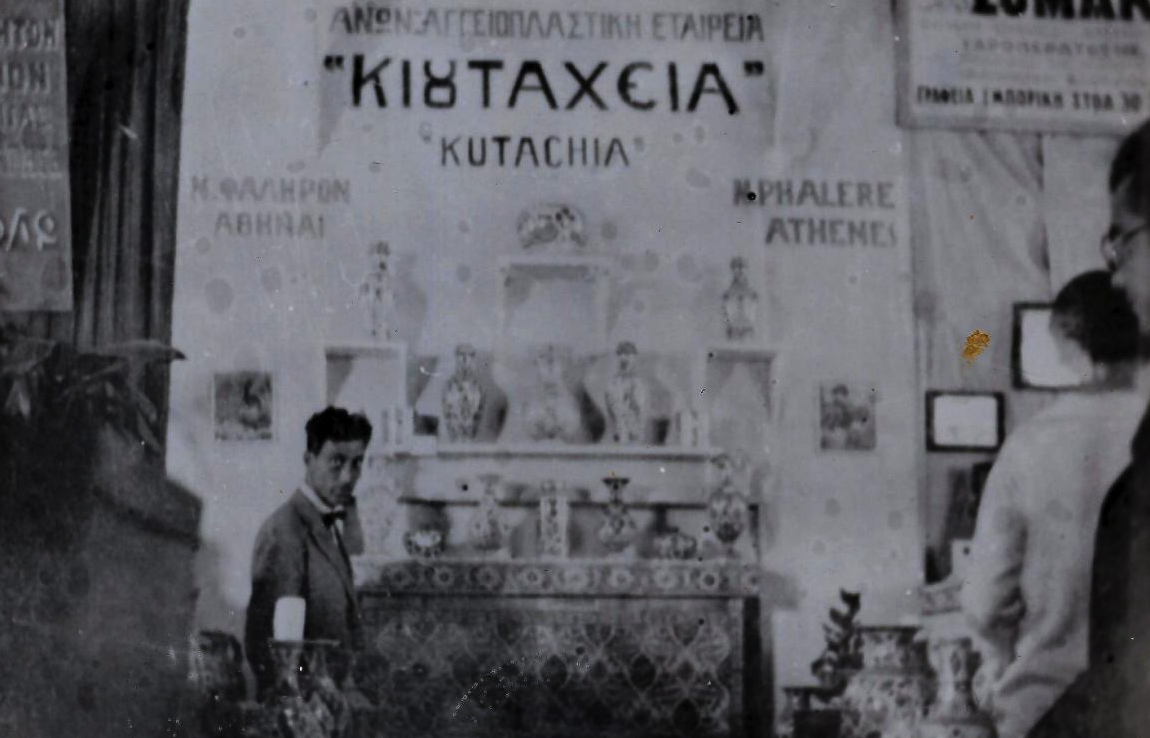
Stratis Doukas was born on the 6th of May 1895 on the Moschonisia islands (the main island is called today Alibey in Turkish). He went to the secondary school at Ayvali together with the writer and painter Fotis Kontoglou. In 1912 he enrolled in the Law Faculty at Athens University, but at the outbreak of the First World War he abandoned his studies. Attracted by its monastic life, he paid his first visit to Mount Athos in 1914 where he would later spend a year (1923-1924) with the painter Spyros Papaloukas as part of their aesthetic quest and artistic explorations. During the period 1916-17 he served as a volunteer in the army of National Defence and later took part in battles on the Macedonian (1917-1918) and Anatolian (1919-1922) fronts, where he was wounded.
When in 1923 he returned to civilian life after seven years in the army, Doukas became the artistic director of a commercial venture to introduce traditional Anatolian crafts such as pottery and carpet weaving into Greece. After a few years he became seriously ill and moved to Thessaloniki to be close to his family. Following his recovery, he travelled in the countryside of western Macedonia from September to December 1928 as a reporter for the newspaper Makedonia and it was during these travels that he met Kozakoglou and wrote his story.
Following his younger brother Alekos who had moved to Australia ten years earlier, his mother, sister and her husband emigrated to Australia in 1937. His mother died there two years later. The years up to 1936 were the most crucial and fruitful for him as a writer and artist. Afterwards, his involvement in social and political activities prevented him from concentrating on his creative work.
During the Second World War, Doukas settled permanently in Athens where he married Dimitra Diakaki. Encouraged by him, Dimitra turned to writing. In the 1950s he served as a secretary of the Society of Greek Authors and contributed articles and art reviews to journals and newspapers. He became a member of the Communist party and his political beliefs caused him trouble during the military dictatorship (1967-1974). In 1962 he went to Moscow to have an operation which, however, was not carried out. After this time he remained confined at home. Doukas died on 26 November 1983.
Following his Prisoner of War's Story, Doukas wrote a number of short, mostly lyrical, literary texts (Enotia 1974, nine prose pieces written during the 1930s and 1940s, Thermokipio 1982), travel notes (Odoiporos, published in 1968, but written around 1929) and studies on art and artists (Yannoulis Halepas, Spyros Papaloukas). He also published a collection of drawings (1979). It should be noted that most of his texts are accompanied by drawings either by him or others, demonstrating how word and image were intertwined for Doukas. He was also involved in the publication of a number of journals, including the influential modernist journal The Third Eye (1935-1937).
However, his reputation as a writer rests exclusively on A Prisoner of Wars Story which, so far, has passed through almost thirty editions. It was first published in March 1929 and was reprinted in 1932, 1958, 1962 (in Bucharest), 1969 (in Thessaloniki), and 1977 (with drawings by Dimitris Mytaras). The seventh edition, with drawings by the Swedish painter Bengi Kristenson, came out in 1980, and the subsequent editions are based on this one. From 1980 up to the present time it has seen almost twenty reprints, a sign of its lasting and growing popularity.
-From "A Prisoner of War's Story"
A STRATIS DOUKAS PRIMER
A short biography (in English)
(The links below present documents in Greek)
STRATIS DOUKAS-A SHORT INTRODUCTION
In His Own Voice-About the "Kioutacheia Exhibit"
About the "Kioutacheia Exhibit"
The Stratis Doukas Museum
